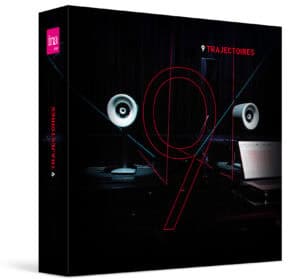Listening as ritual
Text for the CD coffret "9 Trajectoires", published by GRM, Paris, 2018

The CD contains the following of my works:
extrémités lointaines, 1998
distance liquide, 2007
Monochord, 2008
migration pétrée, 2001
Sometimes we are asked about our ‘ideal listener.’ For years I have been thinking about a listener who is curious about this world, its cultures, and people. Someone who likes to travel to unknown places - even if just mentally. Lately, another aspect became important: the listener should set time apart for listening as a dedicated act. This is, of course, best achieved in a concert situation, where music is not an acoustic curtain to other daily activities, but a community of interested people shares the listening moment. But it can also be experienced with a CD and a good pair of speakers - or better headphones.
Listening as a ritual - without doing anything else - just diving into the sound world and letting all inner images and imaginations flow.
My music uses recorded sounds from many sources and continents and melts them into new shapes, energies and stories. I’m thinking a lot about ‘element’ and ‘context.’ A recorded sound from the world was taken from its natural sounding context. Let’s say I’m recording a voice in the street. I don’t only get the voice, but also other sounds happening in its surroundings.
My work as a composer is now to recompose an imaginary sound context into which these ‘elements’ are placed. Therefore I’m often cleaning the sounds of their original context to make them more ‘neutral.’ This happens through all kinds of computer processing and transformations.
I’m obtaining new elements, combine them with other elements, which took place at different times and in different surroundings. In this new, imagined context I’m creating relationships which were not obvious or not possible in reality.
To recognize the source of a sound holds a powerful meaning in electroacoustic music and I’m trying to work with it. I don’t conceive my work to be ‘acousmatic’ - in the historical sense of the term - where the mental image of the source is omitted. I’m playing with a large spectrum between reality and abstraction.
Subjectivity and objectivity are very relative to me as well, as they depend very much on the listener’s education, culture, expectations, etc. I can only judge from my listening and knowledge. Something taken for granted in central Europe might not trigger the same sense of ‘obvious’ to a Japanese audience.
The four works on this CD include varying explorations of the idea of a sound ritual.
extrémités lointaines was the first work, where the idea of a sound ritual became apparent to me. After spending a month in Southeast Asia, the intensity of my impressions forged the collected sounds into this composition. migration pétrée opposes two sonic images: flying stones and encaged birds. Distance liquide is a reflection on distance to friends and family, and monochord represents a personal sound-hommage to the Swiss sculptor and composer Oscar Wiggli.
I’m not recreating existing rituals. I’m shaping sounds into listening experiences, which suggest that something is about to be celebrated. But we are not familiar with all the details of its meanings and implications.
We attend it; we are invited to share the moment and hopefully listen with curiosity.
August 2017